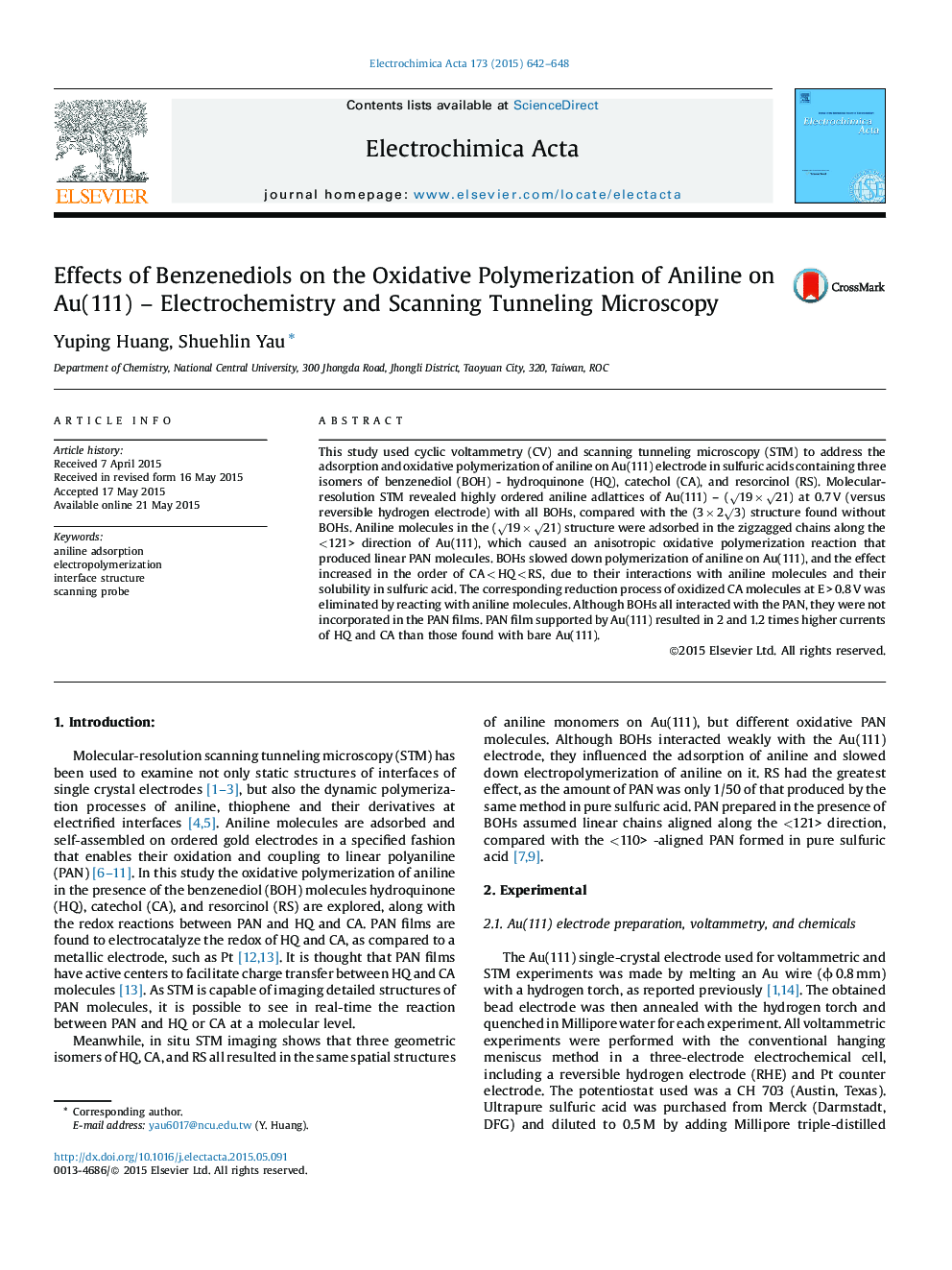| Article ID | Journal | Published Year | Pages | File Type |
|---|---|---|---|---|
| 183831 | Electrochimica Acta | 2015 | 7 Pages |
This study used cyclic voltammetry (CV) and scanning tunneling microscopy (STM) to address the adsorption and oxidative polymerization of aniline on Au(111) electrode in sulfuric acids containing three isomers of benzenediol (BOH) - hydroquinone (HQ), catechol (CA), and resorcinol (RS). Molecular-resolution STM revealed highly ordered aniline adlattices of Au(111) – (√19 × √21) at 0.7 V (versus reversible hydrogen electrode) with all BOHs, compared with the (3 × 2√3) structure found without BOHs. Aniline molecules in the (√19 × √21) structure were adsorbed in the zigzagged chains along the <121> direction of Au(111), which caused an anisotropic oxidative polymerization reaction that produced linear PAN molecules. BOHs slowed down polymerization of aniline on Au(111), and the effect increased in the order of CA < HQ < RS, due to their interactions with aniline molecules and their solubility in sulfuric acid. The corresponding reduction process of oxidized CA molecules at E > 0.8 V was eliminated by reacting with aniline molecules. Although BOHs all interacted with the PAN, they were not incorporated in the PAN films. PAN film supported by Au(111) resulted in 2 and 1.2 times higher currents of HQ and CA than those found with bare Au(111).
